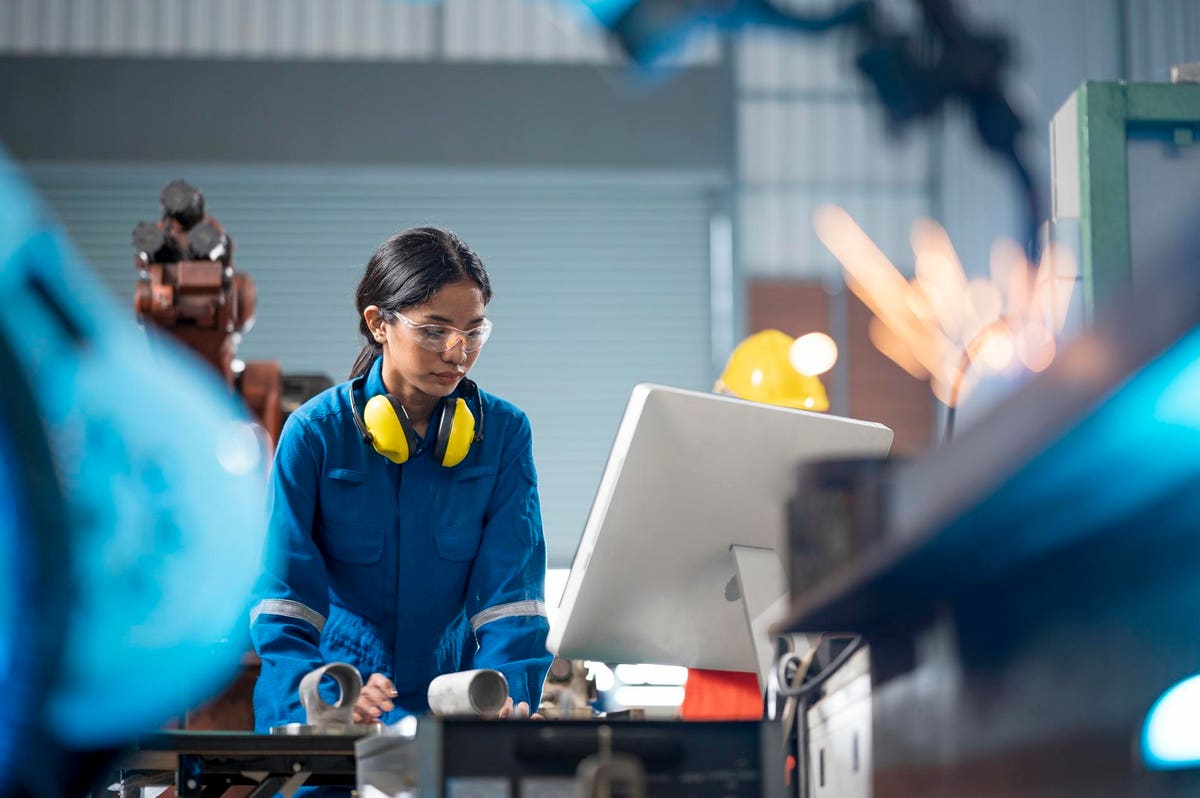Nathan Pieri is Chief Product Officer and VP, Applications for Production Operations Solutions at Rockwell Automation.
On average, four million Americans quit their jobs each month in 2022, nearly doubling quit rates from just 10 years ago. As workers retire and resign from long-held positions, they take with them critical information in the form of historical knowledge, as well as industry and organizational expertise around best practices and business processes. The “great resignation” persists as an obstacle to workforce enablement and optimization, as well as to ensure the ongoing success of companies that operate in crucial industries.
New applications and tools, enabled by Industry 5.0 technologies, can be used to connect workers to critical information in the workplace—eliminating the risk of lost knowledge and ensuring retiring workers can efficiently pass on their expertise to the next generation.
Smart manufacturing technology provides the opportunity for companies to enable the “connected worker,” which prevents knowledge loss through a strategy of digitizing and disseminating knowledge across the enterprise.
Using The Great Resignation As An Opportunity
A substantial portion of the workforce is approaching retirement age. This issue is particularly problematic for manufacturers, where approximately 43% of workers are 45 to 65, compared to just 37% of workers across all industries. The retiring generation of manufacturing workers possesses a lot of knowledge gained from overseeing the change management associated with transitioning from manual, paper-based processes of the past to the automated, digitized operations of today.
Despite the digitization of business processes, much of the knowledge accumulated by enterprise workforces across decades of building industry expertise resides in the know-how of aging employees—who may take that knowledge with them when they retire if it is not codified into core business systems and processes. However, there is a silver lining to the generational workforce change taking place today.
The younger generations—especially Gen-Z, which makes up the cohort of new employees entering the workforce today—are tech natives, which will undoubtedly push manufacturers further along in digital transformation journeys, potentially even speeding up the pace of adoption. Younger workers want to work with digital technologies that have been ubiquitous to them since early childhood, making them much more accustomed to working with new tools and applications.
Manufacturers who offer the opportunity to work with digital and new technologies may also find that hiring and retaining younger employees is easier than it is for companies that still rely on manual processes and outdated technologies.
So, the workforce retirement challenge shifts away from being “how to prevent knowledge loss through employee retention and training” to “how to seamlessly connect industry knowledge across workforce generations and enable new tech native employees to achieve more.”
Enabling The Connected Worker
The new concept of the connected worker is critical to bridging the knowledge gap between generational workforces. Connected workers have access to digitized information that can guide them in workflows, decision making and process optimization.
To enable a connected workforce, organizations should begin by deploying smart manufacturing solutions that can serve as both a tool and a resource for new employees. These solutions need the ability to efficiently capture knowledge and structure the content, such as work instructions, appropriately. Prior to the development of smart manufacturing technology, this information would most likely be passed down in shop floor manuals or verbally in an on-the-job training session.
In addition, companies should look for collaboration tools to access experts and resolve issues quickly. Through the data capture of what is being produced with associated machine state, the new generation of tech-savvy workers can tap into tried-and-true lean manufacturing tools to continuously improve the process.
To successfully enable connected workers, companies can address the challenge of content creation and maintenance of knowledge with new tools that can efficiently capture, structure and maintain that content to organize training, certify a new machine or work center or develop maintenance procedures or troubleshooting guides.
The connected worker of the future now has this digital foundation which becomes the driving force behind new hire training and qualification, from machine training to safety procedures and maintenance certification. This can result in faster onboarding of new employees as well as standardize the quality of new employee training, as each new worker receives a consistent and high level of instruction to succeed in their role.
To get started with enabling connected workers, enterprises need to immediately engage their most experienced employees before they leave the organization. This supports the development of comprehensive knowledge assets by identifying the most critical information that could be lost in workforce changes and using the historic expertise of experienced employees to inform those assets.
The experienced employees will help identify how and when to integrate knowledge sharing into regular business and employee training processes. Experienced workers can also point out less critical responsibilities, helping to identify low-value and low-skill processes that should be automated, such as data entry.
Automating these less critical operations can give new workers more time to execute the aspects of the job that require more critical thinking and contribute to organizational success of producing higher-quality products at lower cost.
Connect Knowledge Across Workforce Generations
By enabling the connected worker, enterprises can see tangible, measurable results in terms of higher levels of quality, asset reliability and, most importantly, the attraction and engagement of new, younger workers who are eager to explore and understand how digital technologies offer opportunities for business improvement.
Ultimately, enterprises that adopt a connected worker approach will see that hiring and retaining the best workers from new generations of employees, without losing historic knowledge gained by experienced employees, is both easier and more natural due to the digitization of enterprise knowledge and operations.
Forbes Technology Council is an invitation-only community for world-class CIOs, CTOs and technology executives. Do I qualify?
Read the full article here





